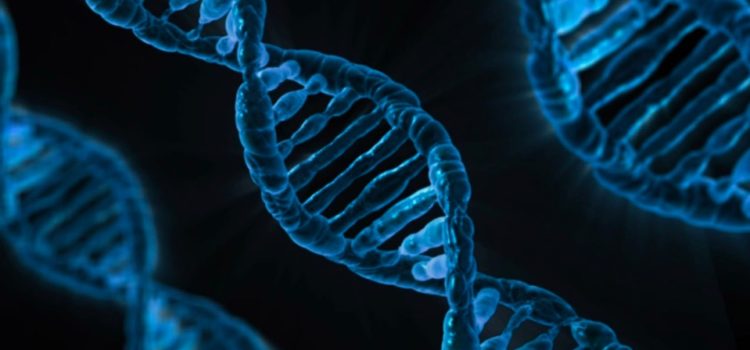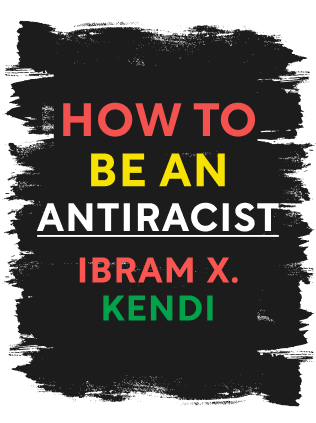

This article is an excerpt from the Shortform book guide to "How to Be an Antiracist" by tIbram X. Kendi. Shortform has the world's best summaries and analyses of books you should be reading.
Like this article? Sign up for a free trial here .
What is biological racism? How does it use biology and genetics to rationalize the superiority of one race over another?
Biological racism is the idea that one race is better than another because of the biology of that race. But How to Be an Antiracist by Ibram X. Kendi notes that there are no biological or genetic differences between races.
Keep reading to understand biological racism, how it started, and Ibram X. Kendi’s experiences with it.
Overview of Biological Racism
Biological racism is a combination of racist policies and ideas that causes and maintains racial inequities, the main idea being the belief that 1) there are biological or genetic differences between races, and 2) these differences make one race superior to another.
Example #1: A 1991 survey revealed that 50% of respondents thought that Black people had “more natural physical ability.”
Example #2: A generally held belief is that Black people are naturally good at improvisational decision making, which makes them good at basketball, rap, and jazz, and bad at astronomy, chess, and music.
There are no biological or genetic differences between races. Racial ancestry doesn’t exist. However, ethnic ancestry does exist—people who are from the same regions usually have similar genes, and these groups of people are called populations. Contrary to what most people believed, geneticists discovered that the populations within Africa are more genetically different from each other than they are from other continents’ populations. For example, genetically, Western African ethnic groups are more similar to groups in Western Europe than Eastern Africa.
Where Did It Come From?
There’s not a lot of historical or cultural support for biological racism—the Bible says that all humans descended from Adam and Eve, which suggests that all humans are the same, as does the American value of “all men are equal.”
However, people who believe in biological racism wanted to find biological differences between racial groups so that they could arrange groups into a hierarchy. They came up with four theories:
Theory #1: The Curse of Ham. After surviving the Great Flood in his ark, Noah planted a vineyard, got drunk, and fell asleep naked in his tent. One of his sons, Ham, saw his father naked and told his brothers Shem and Japheth. His brothers avoided seeing Noah naked by walking backward into his tent and covering him. When Noah woke up, he was furious that Ham had seen him naked and cursed Ham’s son Canaan and his descendants to be the slaves of Shem. Writer George Best suggested that Canaan and his cursed descendants were the ancestors of African people. This theory lasted until the 19th century.
Theory #2: Polygenesis. Polygensis is the theory that each race has its own creation story and is a different species. Indigenous people aren’t mentioned in the Bible, so some White Christians wondered if they had descended from someone other than Adam—and if one group could come from “a different Adam,” then maybe Black people could have too. This idea was heresy, but some slaveholders preferred it to the Curse of Ham theory.
Polygenesis was debated through the Age of Enlightenment. People like Thomas Jefferson denounced it while people like Charles Darwin embraced it.
Theory #3: Natural selection and eugenics. Natural selection and eugenics acknowledge that all people come from the same ancestors, but suggest that not all people are equal. Darwin came up with a theory that the White race was naturally selected and the other races would either assimilate, be enslaved, or die out. Darwin’s half-cousin Francis Galton tried to speed up this natural selection via a transatlantic eugenics movement. He came up with policies that killed members of non-White groups and encouraged White people to reproduce with only each other.
Theory #4: Biological adaptations as a result of the slave trade. In 1988, Black researcher Clarence Grim suggested that African Americans have higher blood pressure because only the individuals who could tolerate high levels of salt had survived drinking ocean water during the Atlantic voyage to America. (Consuming large quantities of salt can increase blood pressure.) This was never proven and Grim didn’t come up with the idea in a lab; he thought of it while reading the fictional Roots.
It took until Nazi Germany’s genocide for the academic community to move away from the idea of biological racism. It took longer for this idea to permeate the general population.
In 2000, Bill Clinton announced that geneticists had finished surveying the entire human genome and discovered that humans share 99.9% of their genes. In spite of this proof, people still tried to find ways to justify biological differences between races. For example, segregationist Writer Nicholas Wade believes that the 0.1% difference in genes is race-related and that there’s a genetic component to behavior.
Ibram’s Experiences With Biological Racism
Growing up in the 90s, Ibram saw biological similarities, such as hair texture and nose shape, between himself and the other Black kids in his class. He also saw physical differences between himself and the White kids, and adults taught him that these differences weren’t simply superficial; they were related to the type of human he was.
In third grade, Ibram’s class was mostly Black. There were a few Latinx and Asian students and three White students, and the teacher subtly gave the White students preferential treatment. She wouldn’t punish them when they committed the same offenses other students had been punished for, and she would call on the White students even when others had their hands up.
One day, a quiet Black girl in the author’s class raised her hand. This was unusual—she was normally shy and rarely participated in class. The teacher noticed she had her hand up but ignored her. When a White hand went up, she called on that person instead. The Black girl was clearly upset that she’d been ignored, and Ibram was furious.
His class went to chapel service and after, Ibram refused to leave. His teacher ordered him to leave—she didn’t ask him what was wrong or why he was refusing to leave—and when that didn’t work, she called the principal. Racist teachers give misbehaving kids of color orders and punishments rather than empathy. The principal tried to order Ibram to move and again he refused to. Eventually, she sat down next to him and let him speak. He explained what had happened with his classmate and the principal said she would talk to the teacher. The teacher did improve, but Ibram switched schools the next year.
Ibram never believed that biological differences made any group superior (a biologically racist idea), but he did believe biological differences existed (also a biologically racist idea). In this way, he held both racist and antiracist views at the same time.

———End of Preview———
Like what you just read? Read the rest of the world's best book summary and analysis of Ibram X. Kendi's "How to Be an Antiracist" at Shortform .
Here's what you'll find in our full How to Be an Antiracist summary :
- What racism is and how it evolved
- How you might have subtle racist thoughts and not even be aware of them
- Why being "not racist" isn't good enough







could you please advise me where to find any respected studies disproving the piles biology journals written by various biologists and scientists, some of which have nothing to gain others driven by hopes to debunk but all have very similar results in that there are minor differences. Now do the differences enable superior attributes? That might be something to debate with referencing Biblical stories and other writers tactics starved of any palpable evidence.